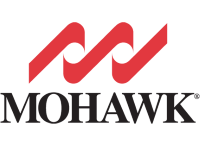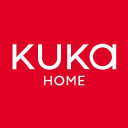
Forbo Holding AG
SIX:FORN

Profitability Summary
Forbo Holding AG's profitability score is hidden . We take all the information about a company's profitability (such as its margins, capital efficiency, free cash flow generating ability, and more) and consolidate it into one single number - the profitability score. The higher the profitability score, the more profitable the company is.
Profitability Score
We take all the information about a company's profitability (such as its margins, capital efficiency, free cash flow generating ability, and more) and consolidate it into one single number - the profitability score. The higher the profitability score, the more profitable the company is.
We take all the information about a company's profitability (such as its margins, capital efficiency, free cash flow generating ability, and more) and consolidate it into one single number - the profitability score. The higher the profitability score, the more profitable the company is.
Profitability Score
Margins
Profit margins represent what percentage of sales has turned into profits. Simply put, the percentage figure indicates how many cents of profit the company has generated for each dollar of sale.
Profit margins help investors assess if a company's management is generating enough profit from its sales and whether operating costs and overhead costs are being contained.
Earnings Waterfall
Forbo Holding AG

|
Revenue
|
1.1B
CHF
|
|
Cost of Revenue
|
-737.1m
CHF
|
|
Gross Profit
|
384.9m
CHF
|
|
Operating Expenses
|
-264.3m
CHF
|
|
Operating Income
|
120.6m
CHF
|
|
Other Expenses
|
-25.5m
CHF
|
|
Net Income
|
95.1m
CHF
|
Margins Comparison
Forbo Holding AG Competitors

| Country | Company | Market Cap |
Gross Margin |
Operating Margin |
Net Margin |
||
|---|---|---|---|---|---|---|---|
| CH |

|
Forbo Holding AG
SIX:FORN
|
1.1B CHF |
34%
|
11%
|
8%
|
|
| US |

|
Tempur Sealy International Inc
NYSE:TPX
|
14.3B USD |
45%
|
13%
|
8%
|
|
| US |

|
Mohawk Industries Inc
NYSE:MHK
|
6.5B USD |
26%
|
7%
|
5%
|
|
| CN |

|
Oppein Home Group Inc
SSE:603833
|
41.5B CNY |
35%
|
14%
|
14%
|
|
| TW |

|
Nien Made Enterprise Co Ltd
TWSE:8464
|
99.6B TWD |
57%
|
28%
|
23%
|
|
| CN |

|
Jason Furniture Hangzhou Co Ltd
SSE:603816
|
19.1B CNY |
32%
|
11%
|
10%
|
|
| CN |

|
Suofeiya Home Collection Co Ltd
SZSE:002572
|
16B CNY |
35%
|
13%
|
11%
|
|
| HK |

|
Man Wah Holdings Ltd
HKEX:1999
|
14.9B HKD |
40%
|
17%
|
13%
|
|
| CN |
D
|
De Rucci Healthy Sleep Co Ltd
SZSE:001323
|
12.9B CNY |
50%
|
15%
|
13%
|
|
| US |

|
La-Z-Boy Inc
NYSE:LZB
|
1.6B USD |
44%
|
7%
|
6%
|
|
| CN |
H
|
HHC Changzhou Corp
SZSE:301061
|
10.1B CNY |
34%
|
22%
|
22%
|
Return on Capital
Return on capital ratios give a sense of how well a company is using its capital (equity, assets, capital employed, etc.) to generate profits (operating income, net income, etc.). In simple words, these ratios show how much income is generated for each dollar of capital invested.


Return on Capital Comparison
Forbo Holding AG Competitors

| Country | Company | Market Cap | ROE | ROA | ROCE | ROIC | ||
|---|---|---|---|---|---|---|---|---|
| CH |

|
Forbo Holding AG
SIX:FORN
|
1.1B CHF |
16%
|
10%
|
17%
|
12%
|
|
| US |

|
Tempur Sealy International Inc
NYSE:TPX
|
14.3B USD |
100%
|
9%
|
18%
|
12%
|
|
| US |

|
Mohawk Industries Inc
NYSE:MHK
|
6.5B USD |
7%
|
4%
|
8%
|
7%
|
|
| CN |

|
Oppein Home Group Inc
SSE:603833
|
41.5B CNY |
15%
|
8%
|
13%
|
11%
|
|
| TW |

|
Nien Made Enterprise Co Ltd
TWSE:8464
|
99.6B TWD |
27%
|
20%
|
29%
|
31%
|
|
| CN |

|
Jason Furniture Hangzhou Co Ltd
SSE:603816
|
19.1B CNY |
20%
|
11%
|
21%
|
15%
|
|
| CN |

|
Suofeiya Home Collection Co Ltd
SZSE:002572
|
16B CNY |
19%
|
9%
|
19%
|
15%
|
|
| HK |

|
Man Wah Holdings Ltd
HKEX:1999
|
14.9B HKD |
19%
|
11%
|
23%
|
17%
|
|
| CN |
D
|
De Rucci Healthy Sleep Co Ltd
SZSE:001323
|
12.9B CNY |
12%
|
7%
|
13%
|
44%
|
|
| US |

|
La-Z-Boy Inc
NYSE:LZB
|
1.6B USD |
12%
|
6%
|
11%
|
8%
|
|
| CN |
H
|
HHC Changzhou Corp
SZSE:301061
|
10.1B CNY |
17%
|
14%
|
16%
|
55%
|
Free Cash Flow
Free cash flow (FCF) is the money a company has left over after paying its operating expenses and capital expenditures. The more free cash flow a company has, the more it can allocate to dividends, paying down debt, and growth opportunities.
If a company has a decreasing free cash flow, that is not necessarily bad if the company is investing in its growth.























































 You don't have any saved screeners yet
You don't have any saved screeners yet
